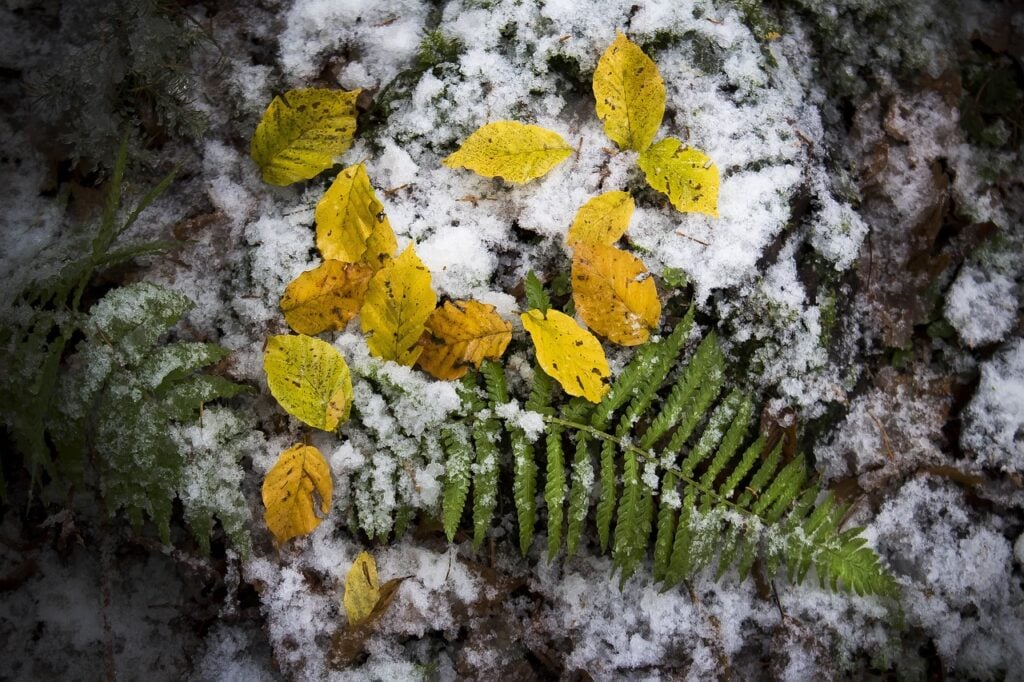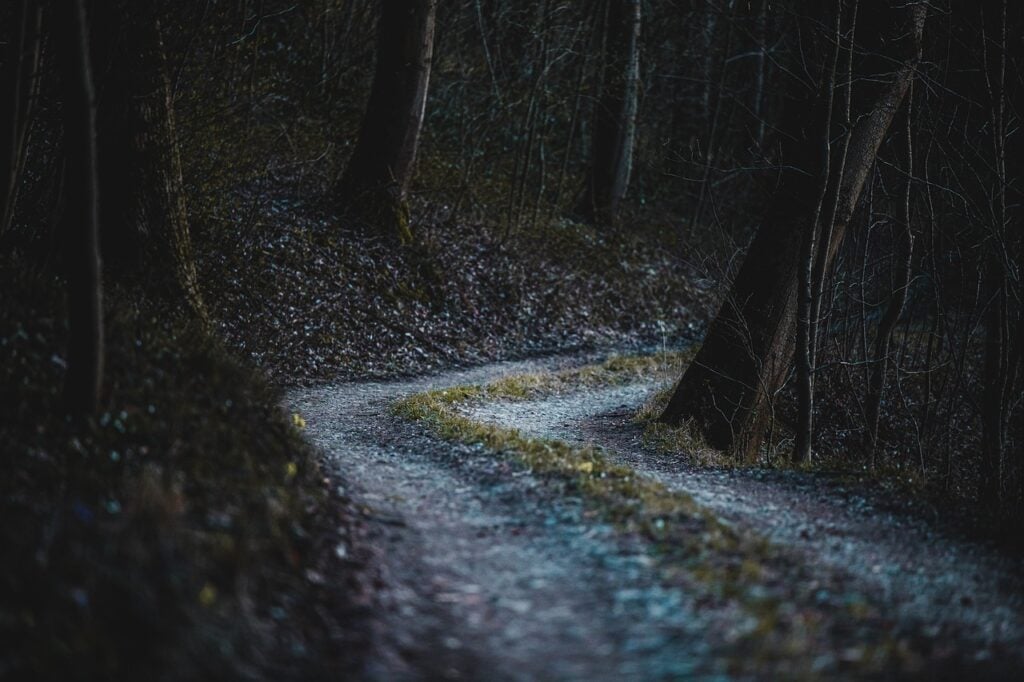Previously: Sugisawa Village.
Type: LP (Legendary Plant).
Period/location of origin: The precise period of origin or discovery is unknown, although much of the writing and documentation about subject dates to the 1800s. It is largely found in Germany and the surrounding environs, although may also be present in several other regions (see: Additional notes).
Appearance: Various/unknown. Subject, known variously in German as “die irrwurz,” “irrwurzen,” “irrwurzel,” and “irrkraut,” and commonly rendered in English as the “confusion root,” the “astray herb,” etc., has been described by various sources as anything from a fern to a tree; it may even be a variety of plantain. (See: Additional notes.)

Modus operandi: Subject tends to grow in wooded or forested areas. Should a target step on, over, or across subject, target will immediately become confused and unable to navigate their way out of their current location or situation — that is, interaction with die irrwurz causes targets to go astray, losing their way for no other discernable reason.
[Like what you read? Check out Dangerous Games To Play In The Dark, available from Chronicle Books now!]
Some reports note that targets are only led astray if they step on, over, or across subject without first seeing it; others, however, do not specify this characteristic, implying that even if targets do see or notice subject while encountering it, they will still find themselves lost shortly thereafter. Additionally, some reports state that the seed of subject — the “irrkraut” — is the problem, not the plant itself; according to these reports, targets are led astray if an irrkraut should find its way inside their shoe.
Still other reports note that targets must eat or otherwise consume subject in order to experience its adverse navigational effects.
In one region — the Tyrol, located in the Alps — stepping over subject does not simply disorient targets; it somehow transports them somewhere else: Either a swamp, or a “knacker’s yard” (that is, a farm, field, or facility used to process animal remains such as roadkill into byproducts for further use (tallow, gelatin, etc.).
Meanwhile, in Thüringen — the central German region also known as Thuringia — subject may also bear the name “atter-kreutich,” or “adder herb”; targets carrying it may find themselves suddenly and inexplicably pursued by adders.
Subject’s goal remains unknown. Perhaps it is not dissimilar from that of Dionaea muscipula, colloquially known as the Venus flytrap: The forest it grows in needs to feed. And this is one way to ensure a steady food supply.
Then again, perhaps not. Perhaps subject simply delights in the confusion of humankind.
Further study is required.

Containment: Per Jacob Grimm’s Deutsche Mythologie, volume 3 (translated into English as Teutonic Mythology by James Steven Stallybrass, published in 1883, targets who have unwittingly stepped over, on, etc. die irrwurz may “prevent or correct [their] straying” by “[sitting] down and [putting] your shoes on the wrong feet”; alternatively, if target is wearing an apron, target may “untie your apron and turn it wrong side out.” Should targets perform one or both of these actions, “immediately you know your way again.”
Rudolf Baumbach’s Sommermärchen (translated into English by Edward Meyer and published in 1900) further notes that “a spray of the kranewett” — that is, juniper berries — “counteracts the charm” subject has employed to impede targets.
It is sometimes said, however, that once a target has stepped upon subject, there is no remedy they themselves can take. Rather, they must wait until another person steps upon subject: Only then will they be able to find their way home once more.
Additional notes: Subject has long been present in the folklore of Germanic regions. As is often the case with folklore initially passed down through oral history and storytelling, it is not known precisely when reports of subject began making the rounds. However, by the 1800s, when much of this oral history and folklore began receiving a written record, tales were well-established.
These tales may be found in sources such as the third volume of Jacob Grimm’s four-volume collection Deutsche Mythologie (in English, Teutonic Mythology), originally published in 1835; Sagen, Maerchen und Gebraeuche aus Tirol (in English, Legends, Fairy Tales, and Customs from Tyrol) by Ignaz Vincenz Zingerle, first published in 1859; and the second volume of the 10-volume Handwörterbuch des Deutschen Aberglaubens (roughly, The Hand Dictionary Of German Superstitions), edited by Hanns Bächtold-Stäubli and Eduard Hoffmann-Krayer and originally published between 1927 and 1942.
Anecdotal evidence of subject’s existence, modus operandi, etc. abound, although it may be necessary to dig rather deeply for them.
One article, published in 1966 in the local Innsbruck, Austria newspaper Tiroler Tageszeitung, mentions the work of a Tyrolean ethnologist identified as Johann N. von Alpenburg, who reportedly wrote over a century prior of “a root” growing “in the forests and meadows, [and] on mountain and valley” which “possesses such powers, that whoever steps upon it will meander aimlessly for days, just as the witches and masters of the dark arts understand how to distract a person and lead him astray.”
The article then goes on to describe the plight of a boy traveling from Maria Larch to Gnadenwald who, on January 4, 1912, went missing during his journey; the boy’s remains were found frozen by a stream, having strayed quite far from the path. His shoes and stockings had been removed. How precisely the boy had managed to stray so far from the well-marked path was not explained. “There were no answers” to the many questions prompted by the mystery of the boy’s death, notes the article, “and no one wished to mention the Irrwurzel out loud.”

Another account published at the European folklore database and resource Sagen.at, tells the story of a Wildschönauer traveling to Soll, Austria via the Bruggberg who encounters subject and subsequently becomes lost in the woods for seven days. After escaping several dancing mountain spirits during this episode, he did manage to escape; however, he never traveled that way again, nor engaged in any dancing activities for the rest of his life.
A piece written by a relative of the owner of the local history blog Paschberg.blogspot.com (translated into English by ATA-certified translator Kristina Cosumano and available at the website Licus Translation) recounts another tale relayed by von Alpenberg that reportedly takes place in 1832. One day during this year at three o’clock in the morning, a porter, Jakob Tunner, began traveling from Hinterriss in the Tyrol with 100 pounds of butter, headed towards Jenbach for delivery. He became lost; when he was eventually found, he was so disoriented that the herdsmen who located him said that “he must stepped upon an irrwurzel.”
Some sources — namely those recounting the work of von Alpenberg — state that subject is now extinct. Reportedly, the last remaining sample of subject was burned in 1803 by a dying oil-trader, who performed this action at the bidding of a priest. If this were truly the case, it is unknown how stories such as the set in 1832 could have occurred.
Interestingly, accounts of plants extraordinarily similar to subject have also been reported in France and Switzerland, as well as in Pennsylvania Dutch communities in the Untied States. In France, the plant is known by many names, including but not limited to: “Herbe d’égarement” (“herb of befuddlement”); “herbe qui égare” (“herb which leads one astray”); “herbe des tournes” (“herb of turns”); and “herbe d’oubli” (“herb of oblivion”). In Switzerland, it is called “vexierchrut” (“vexing herb”) and must be carried in a pocket for its misdirectional qualities to assert themselves.
In the Pennsylvanian Dutch dialect, it is known as “verirrgraut” or “verirrgaut” (“confusion herb”), and identified as a “Rattlesnake plantain” with dark leaves and white veins. If stepped upon, subject imparts the confusion effects previously noted; however, the confusion will lift by morning. Other recommended strategies for counteracting subject include the previously-described technique of putting your shoes on the wrong feet, or by removing your shoes entirely and walking barefoot.
Whether these plants are all the same plant as subject under different names, or whether they are all different but related plants remains to be seen.
Recommendation: Learn to recognize the signs of an encounter with subject, and memorize several mitigation or containment strategies. It never hurts to be prepared.
But really: Just watch where you’re going.
Better to avoid an encounter in the first place, right?
Resources:
Teutonic Mythology, vol. 3 by Jacob Grimm, tr. James Steven Stallybrass.
Sommermärchen by Rudolf Baumbach, tr. Edward Meyer.
Sagen, Maerchen und Gebraeuche aus Tirol by Ignaz Vincenz Zingerle. (In German.)
Handwörterbuch des Deutschen Aberglaubens, vol. 2 ed. Hanns Bächtold-Stäubli and Eduard Hoffmann-Krayer. (In German.)
Die Irrwurz. (In German.)
Forgotten Innsbruck: The Irrwurzel.
Irrwurzen im Brixental. (In German.)
In Days Gone By: Folklore And Traditions Of The Pennsylvania Dutch by Audrey Burie Kirchner.
***
Follow The Ghost In My Machine on Twitter @GhostMachine13 and on Facebook @TheGhostInMyMachine. And for more games, don’t forget to check out Dangerous Games To Play In The Dark, available now from Chronicle Books!
[Photos via StockSnap, stux, cocoandwifi/Pixabay]
Leave a Reply